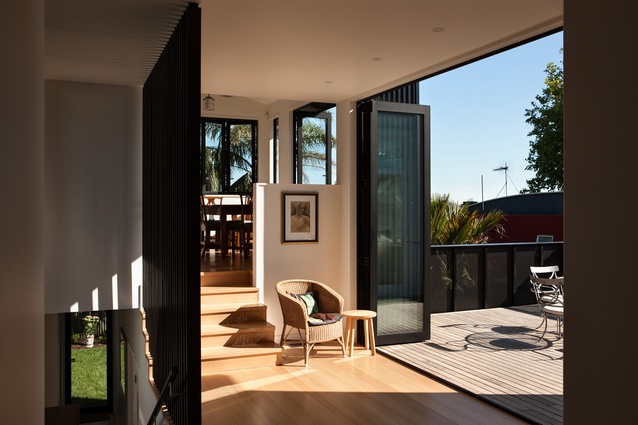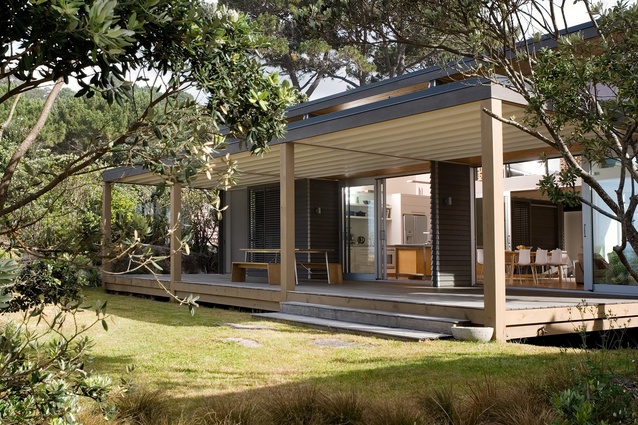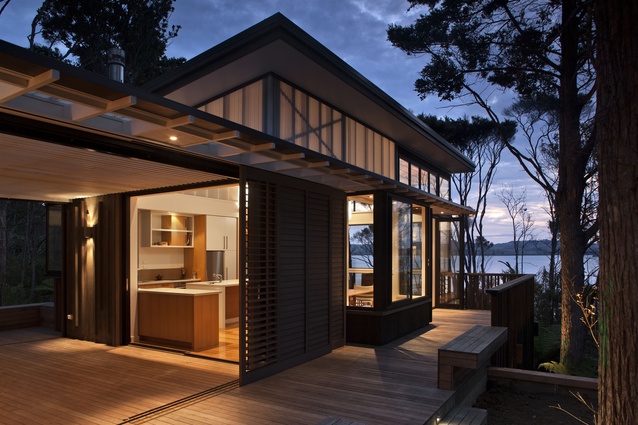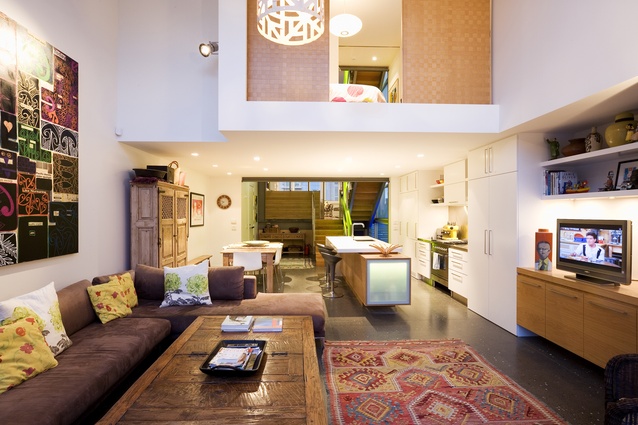Architect profile: Jane Aimer
Jane Aimer of Scarlet Architects talks frankly about apartment living and running one of the first female-led practices in New Zealand.
It’s easy to see how Jane Aimer, director of Auckland practice Scarlet Architects, ended up in architecture. Aimer’s love of design and the built environment was deeply entrenched from an early age. One of her grandfathers worked as an architect on the Auckland Museum and the other was a builder. Her father trained as an engineer, although at heart, Aimer says, he was really “a frustrated architect”.
Was there ever any other career that appealed? “If I hadn’t become an architect, I would have quite liked to have been an account director at an advertising firm like my daughter,” she laughs. “I think I could’ve been really good at that, but that wasn’t really a job then!” Aimer attended the University of Auckland’s School of Architecture and Planning and then transferred to Victoria University in Wellington for two years.
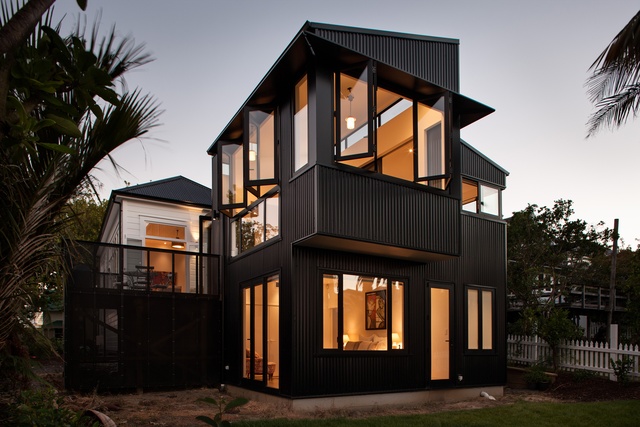
After graduating, Aimer returned to Auckland, where she worked at CPRW for around twelve years. She left to start her own practice, and eventually ended up sharing an office space with fellow architect Lindley Naismith. For several years, both women worked as two separate firms, before joining forces around 2000 as Aimer Naismith Architects. Mike Dowsett joined as a director shortly afterwards and Scarlet Architects was born.
Aimer comments, “It was pretty unusual back then to have two women as directors of a firm that was doing quite well and getting reasonable jobs. There are more female-led practices now but, back then, Lindley and I were refugees from bigger firms. I felt like I didn’t really have a future in a larger practice.”
Running her own business gave Aimer the ability to be more flexible in terms of her working hours as well as commitments to her three children. Within Scarlet Architects, she endeavours to keep a healthy life/work balance, which is a key characteristic of the firm’s philosophy. She explains, ”It was great at the start but as the firm grew and I started to employ people, I felt guilty if I was leaving the office. So we try to have a really flexible work arrangement, knowing that everybody wants to be there for their children’s activities. It’s just too hard otherwise.”

Scarlet Architects was one of the first women-run firms in New Zealand to start winning awards and getting recognition for their work. Despite being tentative at first to enter their projects into awards programmes, she says, “As soon as we had the courage to actually put our work forward, we received some national awards and suddenly we were starting to get a bit of respect from other male architects, and we were also seen as more of a threat!”
Aimer believes that more women are entering and winning awards today, but, she says, “Back then, you would go to the award ceremonies and there was not a single women involved – even within the larger teams that stood up; it was an all-male thing.” She’s proud that the firm has helped to push the recognition of women that are working within the architecture industry in New Zealand.
Scarlet Architects undertakes some commercial work, but it is the residential sector that the company mainly focuses on and that Aimer feels most passionate about. She has seen a cycle over the years, with clients originally wanting quite modest houses, through to enormous homes with multiple living spaces and, more currently, back to smaller homes built in a more sustainable manner, with less of an environmental footprint.
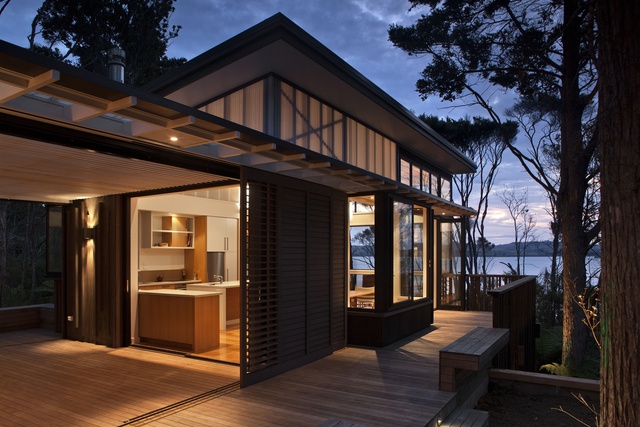
Aimer has noticed another large change during her career. She says, “Everybody thinks they’re an architect these days because they download apps like Pinterest and use sites like Houzz. People used to rip pages out of magazines but, now, ideas are everywhere and instantly available. You also have programmes like The Block, and you can tell when the contestants have seen a Pinterest thing they liked and have faithfully reproduced it without really understanding how the whole thing goes together.”
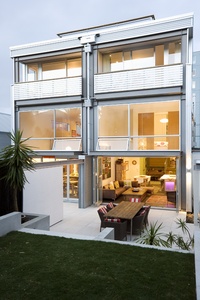
The design process of Scarlet Architects is driven by a narrative. The first steps are to gather a lot of information, such as the context of the site when building a new home, or deciding what to work with or depart from when undertaking a renovation. The firm tries to understand how the client sees themselves using the home in the future or how they are currently using it.
“We don’t create a design and say, ‘here it is with it’s 3D models, this is what you’re getting!’ We just draw up a lot of really scrappy bits of paper with lots of coloured pencil ideas and, then, debate them with the client,” Aimer explains. “That’s part of the brief process for us – lots of discussion and rough sketches. Although, with so much being digital now, Lindley and I are really the only ones still at our drawing boards with our pencils sharpened. I can’t do any of the 3D modelling, so I’m not really employable now!”
With the majority of Scarlet Architects’ work sitting in the urban context, Aimer has several thoughts on how to make apartment living more appealing to Aucklanders. “I think they’ll just get used to it!” she laughs. “The first thing we need to do is make absolutely sure that we’re designing attractive, well-designed apartment buildings – and we see that happening more and more.”
“I think what has put Aucklanders off was that rush of cheap apartments on Nelson and Hobson Street, which are uniformly dreary and ugly. On the plus side, the result from that is that we ended up with an urban design panel, which seems to have made a huge difference. Now, a lot of the developers realise that if they employ good architects then that process through the panel is going to be much smoother,” she says.
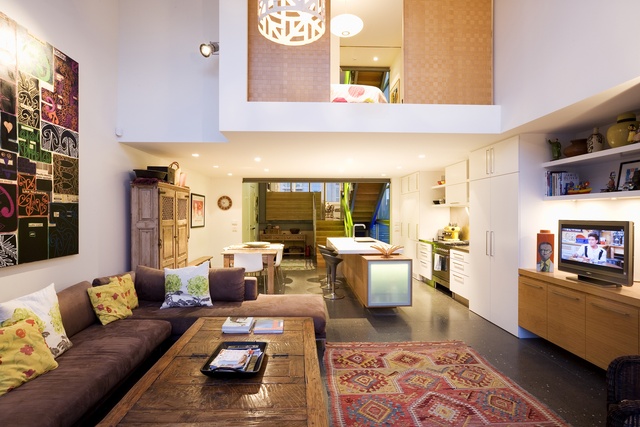
Alongside the increase of well-designed apartments, Aimer also advocates the rise of terraced housing as one solution to Auckland’s housing woes. Practicing what she preaches, Aimer and her husband live in a terraced town house directly next door to Naismith and her partner.
“We were early adopters of the terrace house. For our Whare Mahanga home we worked with the notion of a pulled-apart terrace house with light coming down through the middle, and each home has its own little plot of land. We own our section, so we have no body corporate, and we have a big combined garden with a shared roof terrace that all of us can use.”
“I’m surprised there hasn’t been more of that type of intensification. When you visit Melbourne or Sydney, all of the inner-city suburbs have high density and, when Kiwis travel there, they love that. We need that here but we can’t do it badly; it has to be done appropriately but ensuring people still have their privacy too. That’s what we’re exploring with our homes.”



